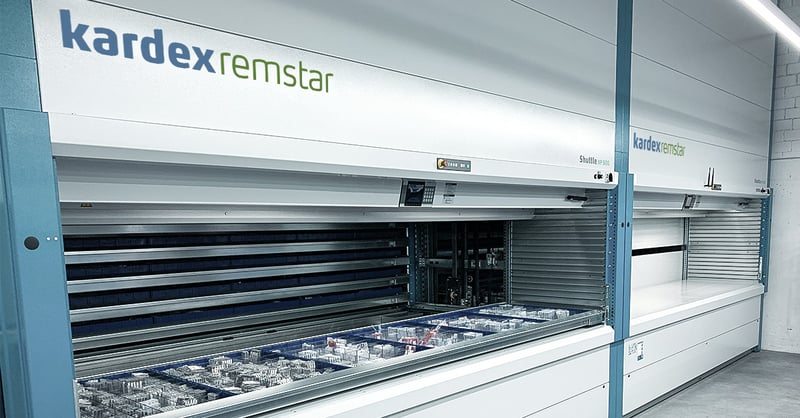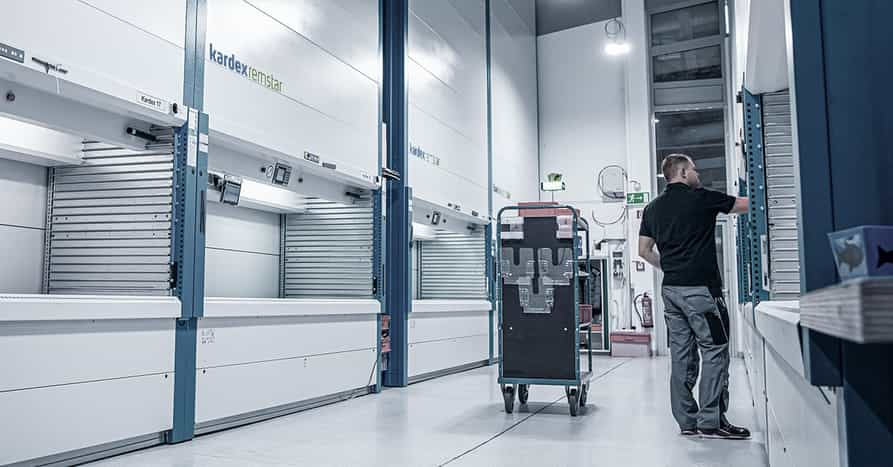Misconception 2: “I'm worried about unplanned downtime.”
Besides cost, reliability is the most common concern of those considering the purchase of ASRS . Unplanned downtime can lead to seriously reduced levels of productivity and throughput. However, when considering the purchase ASRS, these concerns seem to be unwarranted. The most reliable study to date has shown the average uptime of ASRS in the 97-99% range while 100% of ASRS owners would recommend it to a prospective buyer with reliability concerns.
That said, to minimize unplanned downtime, ASRS manufacturers strongly recommend scheduled preventive maintenance. This usually comes standard during the warranty phase. After the warranty expires, extended warranties and maintenance plans should be available and purchased. It will cost you less to regularly maintain your automated system than it will to have a technician come for an unexpected repair. When these automated systems are properly maintained they can be reliable for 20+ years.
Misconception 3: “Our existing software won't integrate.”
Software integration can be overwhelming to say the least. (Or maybe that’s just me?) There are a lot of data points and you want to ensure you’re getting accurate reporting on all levels. If your needs are simple, most ASRS can provide basic inventory management from the onboard controls. More advanced inventory management features such as inventory tracking, FIFO/LIFO picking or batch picking require inventory management software. Software is often offered in tiered packages to help you pick and choose what features you need. To top it all off, most inventory management software solutions can interface directly with your existing WMS or ERP system. Make sure you choose a system that does just that.

Misconception 4: “Training our staff will be expensive and difficult.”
Training is often included with the purchase of your dynamic storage system and/or software. Therefore, getting your team up and running should not be a concern. ASRS solutions are designed with the operator in mind, making them intuitive and easy to navigate.
If you work in a facility with seasonal demand or high turnover, it might be in your best interest to “train the trainer”. Assigning one or two key users to be at an expert level might be best for your business to reduce training costs over time for your newbies or beginners. If you have an influx of newer employees, refresher training is always available from the manufacturer.
Misconception 5: “We're not sophisticated enough for ASRS.”
You don’t have to be a big fish to benefit from automation. ASRS isn’t just for the Amazon’s and Walmart’s of the world. ASRS solutions are scalable and a perfect fit for small- to medium- sized operations. Your needs might be smaller but the ROI works the same. In one study, almost 96% of small to medium sized operations met or exceeded their anticipated ROI expectations with ASRS. Size alone does not appear to have any bearing on viability. Whether you’re looking to save space or increase productivity, ASRS can be scaled down to meet your needs (and then grow to meet increasing demand over time).
Misconception 6: “My throughput isn’t high enough for ASRS.”
You don’t have to be in an order picking operation for automation to cost justify. If your business doesn’t pick 10,000 order lines per hour, that’s okay. There are other applications utilizing ASRS that might be more your speed. Have you considered storing specialty items in an ASRS to save floor space? Maybe those specialty items are only accessed once a month for a certain job. Remember ASRS can save up to 85% of floor space, which you can then utilize for other revenue generating activities.
On top of that, you’ve now gained inventory control by keeping these specialty items contained within a unit. If software monitors the unit, you now have access to data to keep track of who picked what item and when. I’ll even take it one step further - inventory accuracy got you down? Integrating pick to light technology, such as a light pointer or Transaction Information Center (TIC), pinpoints the exact location of the item to pick. This can increase accuracy up to 99.9%! While automation can improve throughput, it’s only one of the many benefits of ASRS.
In Summary
If these “concerns” are just the tip of the iceberg, take a look at the advantages and benefits of ASRS to learn more about how automated storage and retrieval systems can improve you operations.






